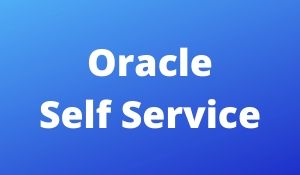
Oracle Self-Service Human Resources (SSHR) extends the functionality of standard Oracle HRMS by enabling both employees and managers to participate in Human Resources management via a web browser. SSHR offers secure self-service business transactions and easy-to-use functionality driven by Oracle’s proven web and workflow technologies. These technologies enable the data, views, stored procedures, validation routines, and Application Programmatic Interfaces (APIs) used in the standard Oracle Applications to be shared, thus providing seamless integration between Oracle HRMS and Self-Service HRMS.
Here you will focus on:
Key features of SSHR include the following
Key Concepts in Self-Service Human Resources (SSHR)
New User Registration
User Profiles
Key features of SSHR include the following:
• Configurability SSHR uses the Oracle Applications Framework (OA Framework) technology to enable flexible personalization options. For example, you can personalize your self-service pages to reflect your corporate identity, or to reflect the specific business processes in your organization. You can personalize the content, appearance, and self-service transactions to suit your requirements and those of the individual user. You can personalize self-service applications to suit the role, experience, work content, language, and information needs.

• Intuitive layout The pages and windows used in SSHR have an intuitive layout and enable users to carry out business processes and transactions without the need for extensive documentation or instruction. Notes and messages are available on pages if appropriate and meaningful.
• Dynamic routing of transactions SSHR utilizes workflow technology to enable you to define dynamic routing and approvals paths for your self-service transactions. You can use Oracle Workflow to configure any process that requires routing, approval, and submission.
• Delivery of workforce intelligence By providing manager functions in SSHR, you can deliver intelligence and information to managers, HR Professionals, executives. These users can retrieve and query information simply and quickly.
• Improved accuracy of data By enabling users to enter and maintain their own information, data input is more accurate and up-to-date. This also reduces repetitive data entry tasks for HR administrators.
• Streamlined business processes By allowing managers, HR Professionals, contingent workers, and employees to work in a paperless environment, you can streamline business processes, reduce administration costs, and improve service. Users can make their own decisions about benefits options and work preferences, for example, and view information online including payslips and tax forms.
• Integration with Oracle Approvals Management (OAM) Oracle Approvals Management (OAM) enables you to define routing rules for your transactions. By using OAM with SSHR, you ensure that your self-service transactions are received and approved or rejected by the correct user.
Key Concepts in Self-Service Human Resources (SSHR)
Application Object Library (AOL) function: An AOL function is an item that can be added to a menu. The item can call a screen or web page or be a hidden function.
Business Process: Produces the products and services that are recognized outside the business area. They support the organization’s objectives, critical success factors, or business objectives. They can be subdivided into sub-processes, for example, the Change Hours workflow process consists of the Work Schedule and Pay Rate subprocesses.
MDS (Meta Data Services) Repository: An active repository that stores information on the appearance and behavior of self-service pages. Customers can configure changes to the definitions held in the MDS Repository using the Personalization Framework.
Oracle Applications (OA) Framework: The OA Framework is the technical foundation for the Oracle Self-Service Applications (OSSWA).
Personalization: Framework The Personalization Framework allows you to configure the display of Oracle Self-Service Web Applications (OSSWA) without having to make any changes to the underlying code. Your configurations are stored in the MDS Repository and are preserved during upgrades.
Region: A region in the MDS Repository defines a section in a page in Oracle Self-Service Web Applications. The region is defined in terms of elements such as fields and buttons.
Self-Service Function: Self-service functions appear as menu options to the SSHR user. The function determines how the self-service modules are called. For example, the same self-service module is used for Personal Information from both the manager and employee menus but the function determines whether the module is called in Employee or Manager mode.
Self-Service Module: A set of dynamic web pages and related components (for example, workflow process and definitions stored in the MDS Repository, stored procedures). Examples include Personal Information, Competencies, and Assignment.
Transaction: A transaction is a logical unit of work such as a promotion or an assignment change. It may consist of several components, such as changes to salary, locations, and grade, but all the components of a transaction must be handled as a unit to be either approved or rejected.
Workflow Builder: Oracle Workflow is embedded within SSHR and manages the flow of information between the HR professional, the manager, the employee, and the applicant. You use workflow to control who and how these participants take part in HR processes by modifying the underlying process definitions.

Workflow Function: A workflow activity which is defined as a function and which maps to a PL/SQL procedure that is executed by the Workflow Engine when it encounters this activity in the workflow process.
Workflow Process: A workflow process is a series of activities linked by transitions. Each activity can be a function, a notification, or a subprocess.
New User Registration
The New User Registration functions enable new users to register their own details and create their own users for SSHR. You can also add a user hook that generates the user name when the user clicks a button on the web page. You can enable the New User Registration functions for both employees and non-employees. The non-employee registration form is usually used in conjunction with Advanced Benefits.
User Profiles
You apply user profiles to control how the SSHR application runs. You can set profile options at the site level, application level, responsibility level, and user level. The individual profile options are specified in the sections on each module.
